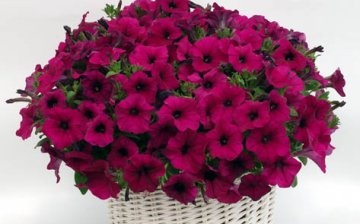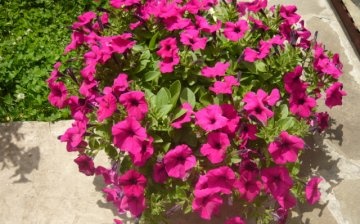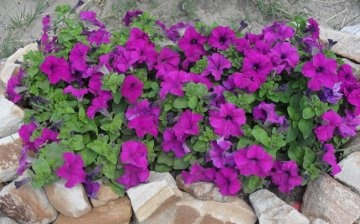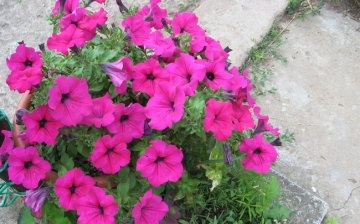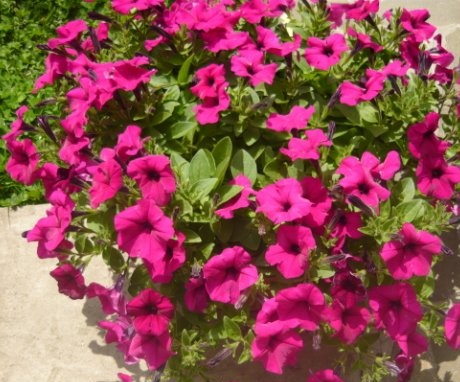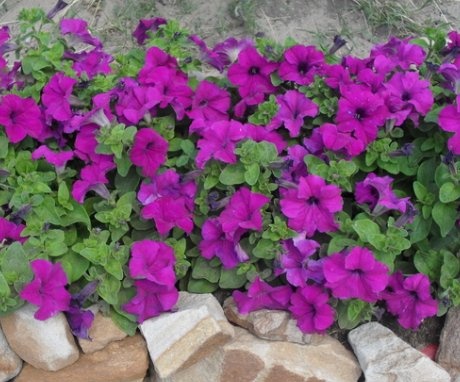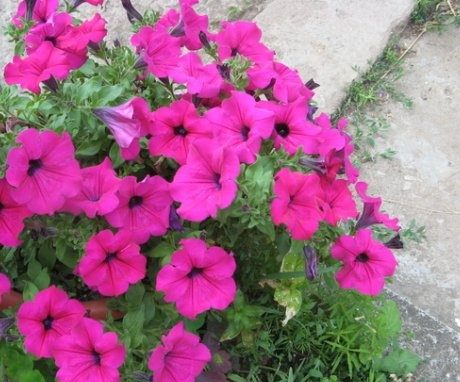Petunia Gioconda and her cultivation
Petunia is a sun-loving plant, and La Gioconda is no exception. This variety is relatively new, but, nevertheless, arouses considerable interest among experienced florists. Growing of all varieties of petunias can be carried out both in the open field and in pots as ampel plant... To get abundant flowering of Gioconda petunia, a certain approach to cultivation is required to it.
Content:
Features of the variety
Petunia Gioconda is a real breakthrough in breeding, as this variety, with proper care, can bloom continuously throughout the year. This variety is one of the annual plants.
The diameter of the bush can reach one meter, while the height of the bush, as a rule, does not exceed 20 cm, and the flowers are relatively small in size - up to 6 cm in diameter. In other words, the plant produces powerful branching shoots, which makes it possible to obtain a bright floral carpet.
The abundance of flowers on each bush is a consequence of the male sterility of the plant, that is, this variety of petunia does not give seeds. If you grow Gioconda in pots, then the shoots fall over the edges in a cascade.
The Gioconda variety is adapted to temperatures from -8 to +40 degrees. With a sharp change in temperature, petunia does not die, but it slows down growth and the intensity of its flowering decreases. The optimal conditions for lush flowering are the temperature + 20 ... + 22 degrees and the length of daylight hours at least 11 hours. While maintaining these parameters, you can achieve year-round flowering, which allows you to enjoy the colors of summer even in winter.
This variety of petunia can be used to produce seedlings in greenhouse conditions. Great for both outdoor cultivation and in pots. However, the branchiness of the Gioconda variety is also a disadvantage, since the plant does not hold its shape well.
Soil selection
To grow the Mona Lisa, you can use a wide variety of soil mixtures, but you should not stop your choice on highly acidic and alkaline soils. The soil mixture should be nutritious, loose, stay moist for as long as possible and at the same time let excess water pass through, and not block.
Ideally, it is best to prepare your own soil for growing petunias. To do this, you need to take well-rotted humus, sod or leafy soil, horse, well-decomposed peat, and sand in a ratio of 2: 2: 2: 1.
If the soil used is acidic, lime must be added to it to neutralize.
Petunia care
All varieties of petunias need almost the same leaving... Planting petunias should be done in sunny areas with fertile soil. Seedlings of this plant should not be planted in sunny weather, so that it does not wither, therefore, a cloudy day or evening will be more suitable for planting. Before planting for permanent residence, whether it be open ground or pots, containers with seedlings should be well watered.
After planting, water the seedlings again and sprinkle the soil around it with humus or peat.
In order for the plant to give good flowering for a long time, it is necessary to loosen the soil near the bushes, water it in the absence of precipitation and regularly feed. For the first time, seedlings should be fertilized 7 days after planting, then top dressing should be carried out with an interval of 10 ... 15 days.
Usually, for this purpose, complex mineral fertilizers are used, which include the NPK complex. Top dressing is diluted in water at the rate of 1.5 g / l and the plants are watered with this water. These actions allow you to get faster growth of the bush and abundant flowering of the Mona Lisa petunia.
Faded flowers must be removed, as they do not look aesthetically pleasing. Duration of flowering of Gioconda petunia is quite long. Moreover, she is not afraid of even the first autumn frosts.
Petunia, whose photo is unlikely to leave anyone indifferent, is afraid of drafts and rains. In general, precipitation does not have the best effect on the flowers, and can also contribute to the onset of root rot. True, this problem is practically eliminated in hybrids, since they are considered more resistant to adverse environmental conditions.
Thus, growing petunias is not difficult. The main thing is to choose the variety that is optimal for the climatic conditions of your region.
Petunia has a unique adaptability to different climates and different types of soil. This plant is distinguished by simplicity in agricultural technology, long and bright flowering, which is why petunia is so fond of flower growers and landscape designers. Today, petunia is one of the most popular and sought-after plants, and the development of new hybrids further increases interest in it.



